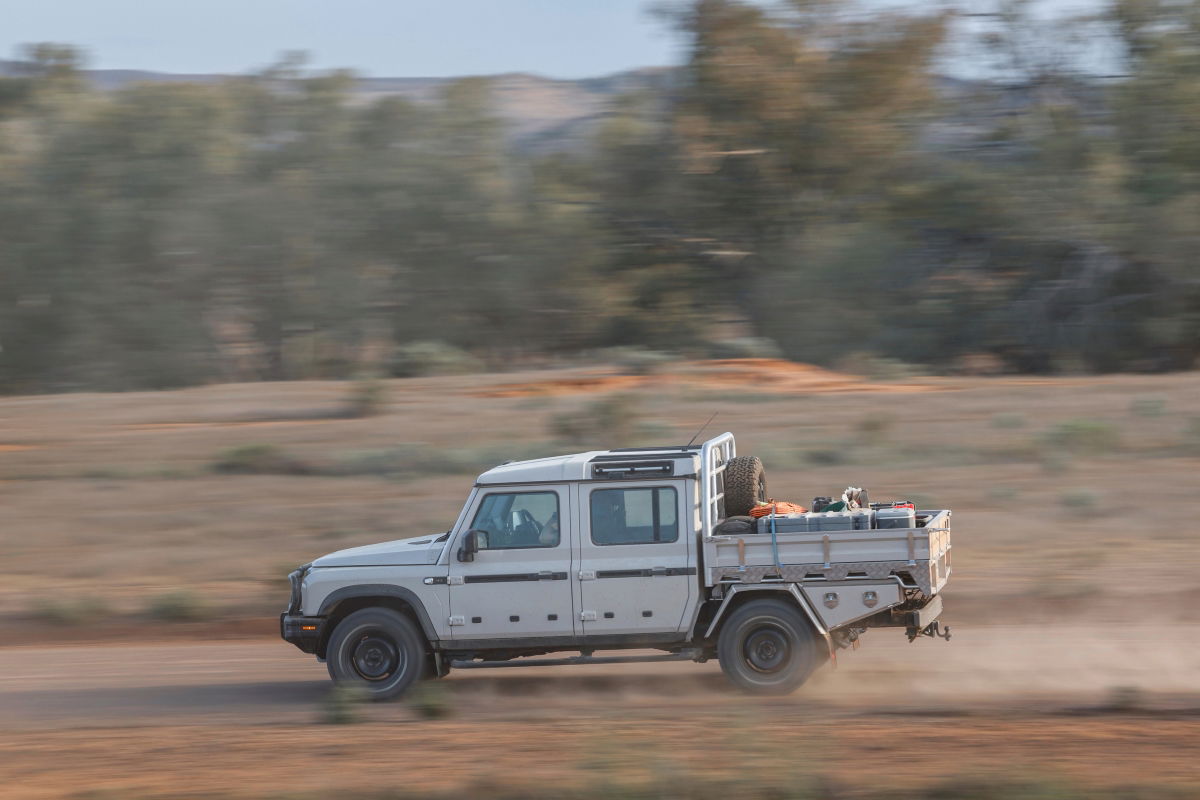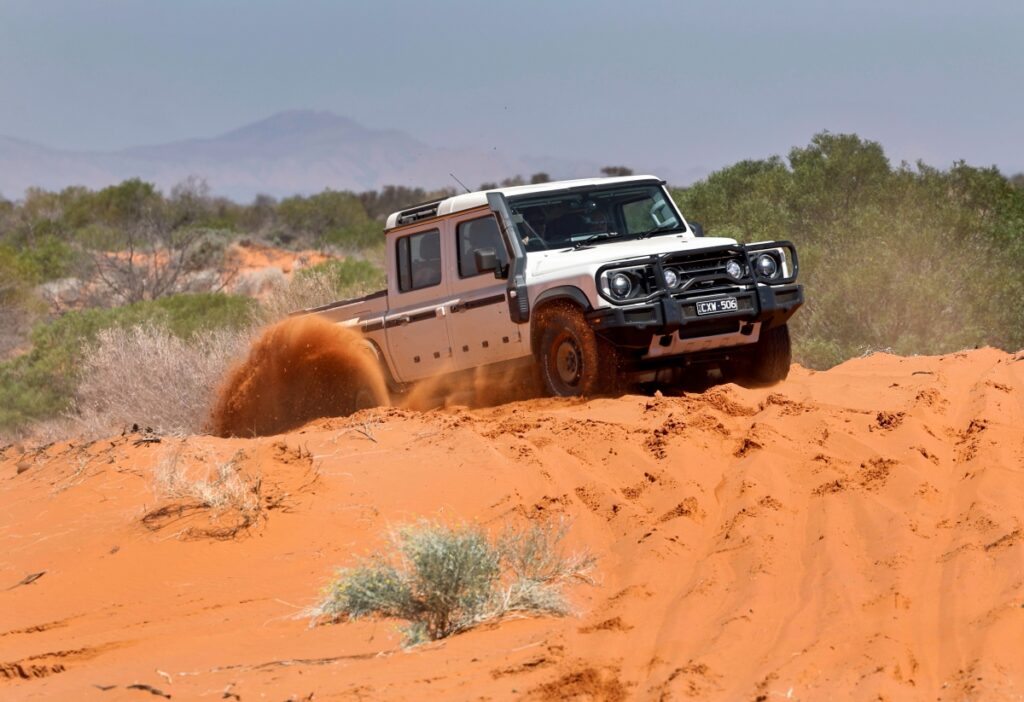
You could spend about $100,000 on a LC79 double-cab ute and then spend $50,000 making it a more liveable, adventure-ready truck. Or you could buy an Ineos Quartermaster ute, and be happy with your life choices.
That’s the impression I came away with after spending hours of driving in the new dual-cab Grenadier ute, which arrives from $102,000 plus on-roads and options, depending on the model you choose.
READ MORE: Ineos goes LandCruiser 70 Series hunting
And while I know there are thousands of mods you can make to a 70 Series to make it a more likeable and adventure-ready model — rear track conversion, coil springs in the back, an auto conversion if you’re lucky enough to get a V8 version, and an engine tune for it, too — but that will cost you a pretty penny.
The Ineos, on the other hand, comes with a choice of two turbocharged straight-six engines from BMW: the single-turbo B58 petrol with 210kW and 450Nm, or the twin-turbo B57 diesel unit with 183kW and 550Nm. No matter which you pick, there’s an eight-speed ZF auto gearbox with a recalibrated torque convertor for off-road efforts, and a gear-driven transfer case with low-range and a centre locking differential.
It’s a cracking thing to drive, as well.
READ MORE: Review – Toyota LandCruiser 70 Series
I spent hours behind the wheel of the diesel version at the launch event, and was mightily impressed with the composure, comfort and control on offer from this ladder-frame off-road-focused truck with beam axles front and rear and coils all around.

Over a heavily corrugated track near the Flinders Ranges it proved a near-perfect tourer, handling the treacherous terrain with tremendous ability. And it did so quietly, too — there’s nowhere near as much wind, road or engine noise intrusion in most situations… until you hit 120km/h on the road, where it can start to remind you that you’re throwing a 2.7-tonne brick-shaped object through the air.
The powertrain choices are both stellar. Sure, you might have some question marks in your mind about applying BMW engines in this sort of vehicle, and I did too — but the brand insists that the engines are made to stand the test of time, with millions of them in action across the globe and across multiple models, too. Add to that the ZF auto, and the hardcore Tremec low-range transfer case with a centre locking diff, and you’ve got a refined and robust feeling thing in the rough stuff.
What impressed me most was the refinement. It is just a far more sophisticated and modern feeling experience than the aforementioned Toyota truck, and while it’s not a Ranger Raptor, it’s not trying to be.
Towing? Sorted! With a 750kg unbraked rating and 3500kg braked, with a 350kg downball rating, and a gross combination mass of 7000kg allowing a load-up and tow scenario, which most double-cabs can’t match.
Payload is better for the petrol at 907kg, while the diesel’s rating is 832kg, and the tub itself is a decent size — though the spare wheel is mounted in the tray area as standard, but you can affix it to the roof instead if needed. There are two recesses in the lined tub to allow a double-spare allocation, too. And if the tub isn’t your rub, there’s also a cab-chassis model, and if you want to get a Norweld tray setup for the back, the brand is offering a $7000 contribution to make your flatbed fantasies a reality.
Dream of being a pilot when you were a kid? You’ll bloody love the interior. It has an array of switches above and a series of buttons and control dials below the touchscreen media system, which itself has a rotary dial and button controller for when the bumpy stuff makes it tough to touch where you intend to. That screen also includes an off-road menu setup, with tyre pressure and temperature readouts, as well as gearbox and transfer case metrics, plus there’s a positional assistant with your bearings, direction and altitude, not to mention the Attitude screen to show you the angles you’re encountering.
Space is good, but the footwell / pedal positioning takes some acclimation. The model I drove had leather-lined and heated Recaro seats, so you don’t need to swap them out, and they’re manually adjustable, so the electrics won’t get damaged when you hose out the interior.

The rear seat space is a bit of an issue. Anyone with long legs will find the space to be limited, despite the scalloped plastic seatbacks, and the bench backrest is very upright, making it a potentially uncomfy spot for longer drives. But if you have kids, you’ll be happy to know there are ISOFIX points in the window seats and three top-tethers, and they’re not the annoying hard-to-get-enough-tension-one-the-strap ones like many other utes.
Ineos has a five-year/unlimited kilometre warranty for the vehicle and the paint, and a 12-year anti-corrosion warranty too. Servicing is due every six months for off-road enthusiasts, or annually for normal driving.
What a cracking thing. The big issue for some will be the price — it starts at $102,000 plus on-roads for a bare-bones cab-chassis without a tray, and ranges through to $123,000 for the flagship model, before options.


















Discussion about this post